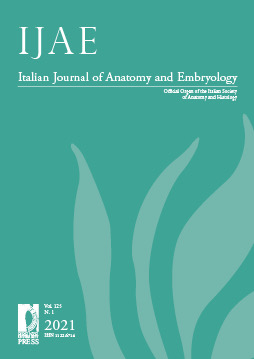The educational value, both past and present, of an ancient scientific collection: the collection of anatomical preparations illustrating the various phases of bone development, from the second month of intrauterine life to adulthood
Published 2022-04-29
Keywords
- educational value,
- ancient scientific collection,
- medical education,
- anatomical preparations,,
- Museum of Siena
- Italy ...More
How to Cite
Abstract
Italy’s museums possess an enormous patrimony of historical scientific artefacts. This raises important questions regarding the conservation and safeguard of such materials and prompts reflection as to the utility of current modalities of popularising science. The collections housed in scientific museums were created in order to promote scientific education by making science more accessible and more comprehensible. The authors ask whether this heritage can still be used for educational purposes today, and examine a collection of preparations on the ossification of human bones in the Anatomical Museum of the University of Siena. They conclude that such materials can still be of educational value if they are made part of exhibitions that meet the needs of the public and of students in training. Indeed, it is essential to bear witness to the long pathway of the development of scientific knowledge and, in particular, to the value of the research on which this knowledge is based. Through the implementation of ad hoc exhibitions, this precious historical scientific patrimony can continue to play an important role in presenting medical/healthcare issues of topical interest without losing sight of the relevance of past experience to basic teaching.


